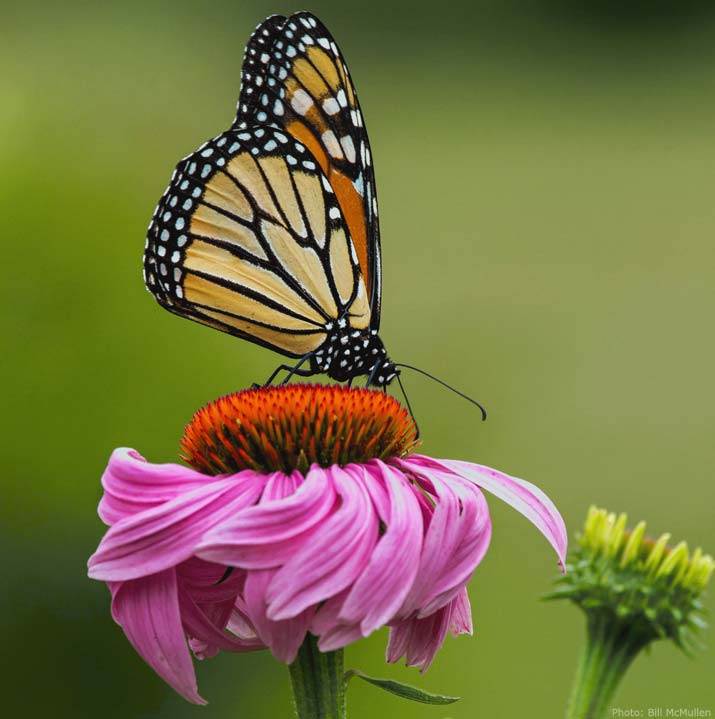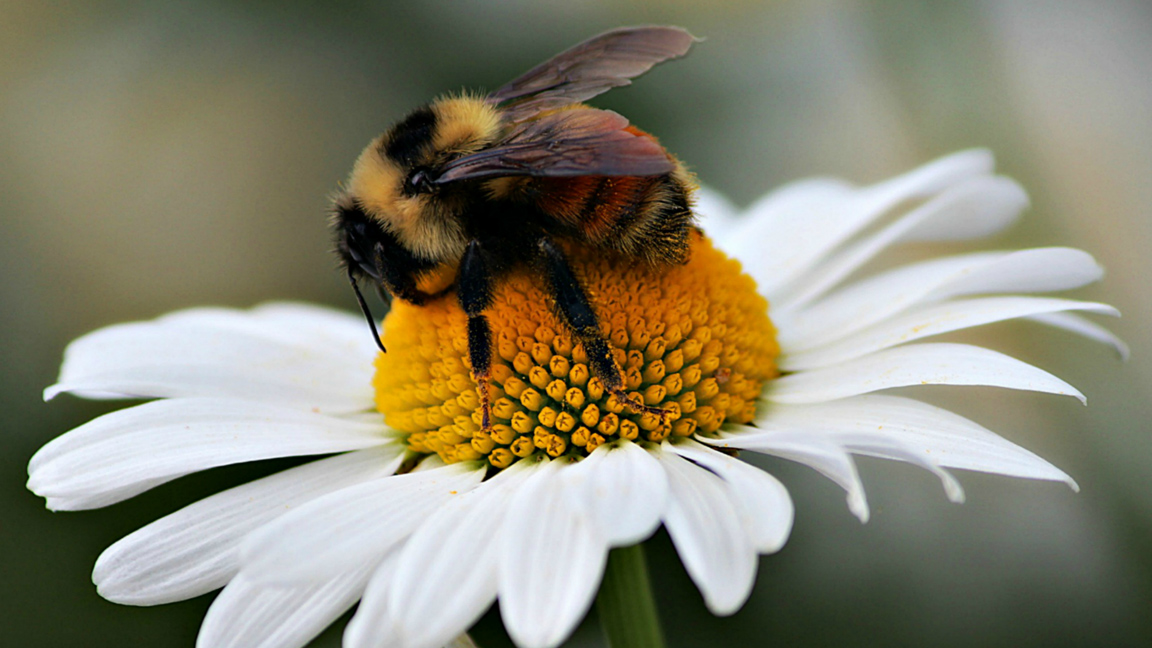Background
Pollinators carry pollen on their bodies and move it between flowers. This tiny act happens millions of times each day, allowing flowering plants to reproduce. It also results in at least one-third of our food. Thousands of different species act as pollinators, including bees, flies, beetles, butterflies, moths, hummingbirds and even some small mammals.
Across North America, pollinator populations are declining. Loss of meadow wildflower habitat is a primary reason for this decline. Wild pollinators are also negatively impacted by pesticide exposure, transfer of disease from domestic bees and climate change. Pollinator decline requires immediate action to ensure the protection of the natural environment and Canada’s food system.
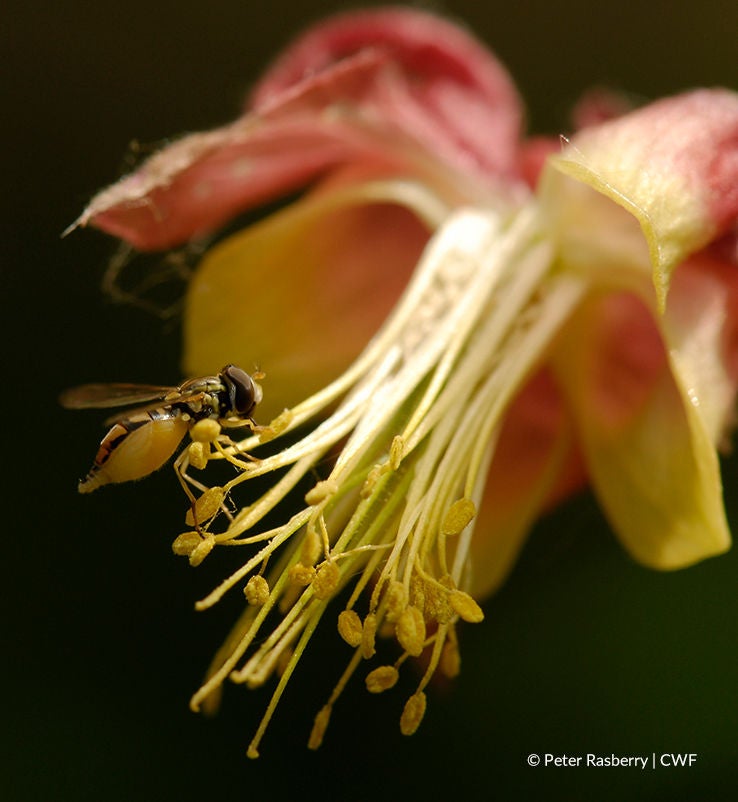
Program Overview
The Canadian Wildlife Federation is a National leader in pollinator conservation. We carry out more than seven major initiatives across Canada, some of which operate internationally.
Our work includes field research by our own team and through collaboration with major universities, nation-wide projects to support habitat restoration and Species At Risk, networks for land managers that link to international communities, and strategies to improve economic development in industries that support pollinator conservation.
CWF's pollinator projects transfer technical support and knowledge to farmers, develop pollinator-friendly practices, and make agricultural policy recommendations to support the recovery of Canada’s wild pollinators.
We advocate for different levels of government to create pollinator pathways by restoring meadow habitat along roadsides, rights-of-ways and in city parks.
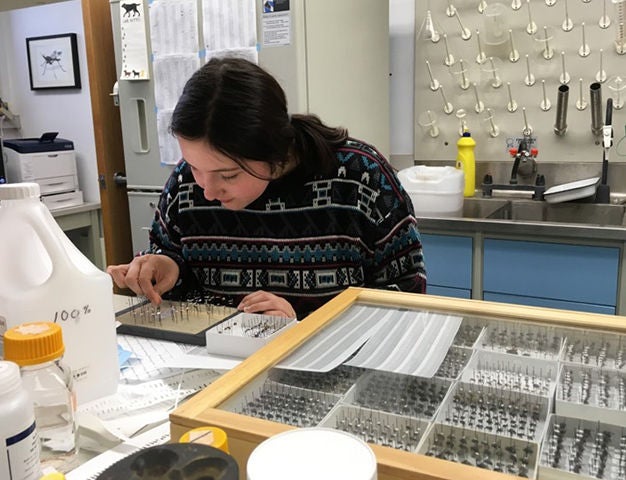
Key Achievements
- 2024:Added a fourth Monarch habitat restoration program in Quebec.
- 2021: Began framing the Canadian Seed Strategy
- 2021: Established the Canadian chapter of the USA Rights-of-Way as Habitat Working Group
- 2020, 2021: Recommended a national pollinator habitat strategy through the Green Budget Coalition
- 2020: Advised the Commission for Environmental Cooperation on a framework for a North American (tri-national) pollinator conservation strategy
- 2019: Completed a large reference insect collection for insects on farmland edges
- 2018: Pollinator and habitat research on farms in SW Ont began.
- 2018 Rights-of-Way project began
Our work for Pollinators
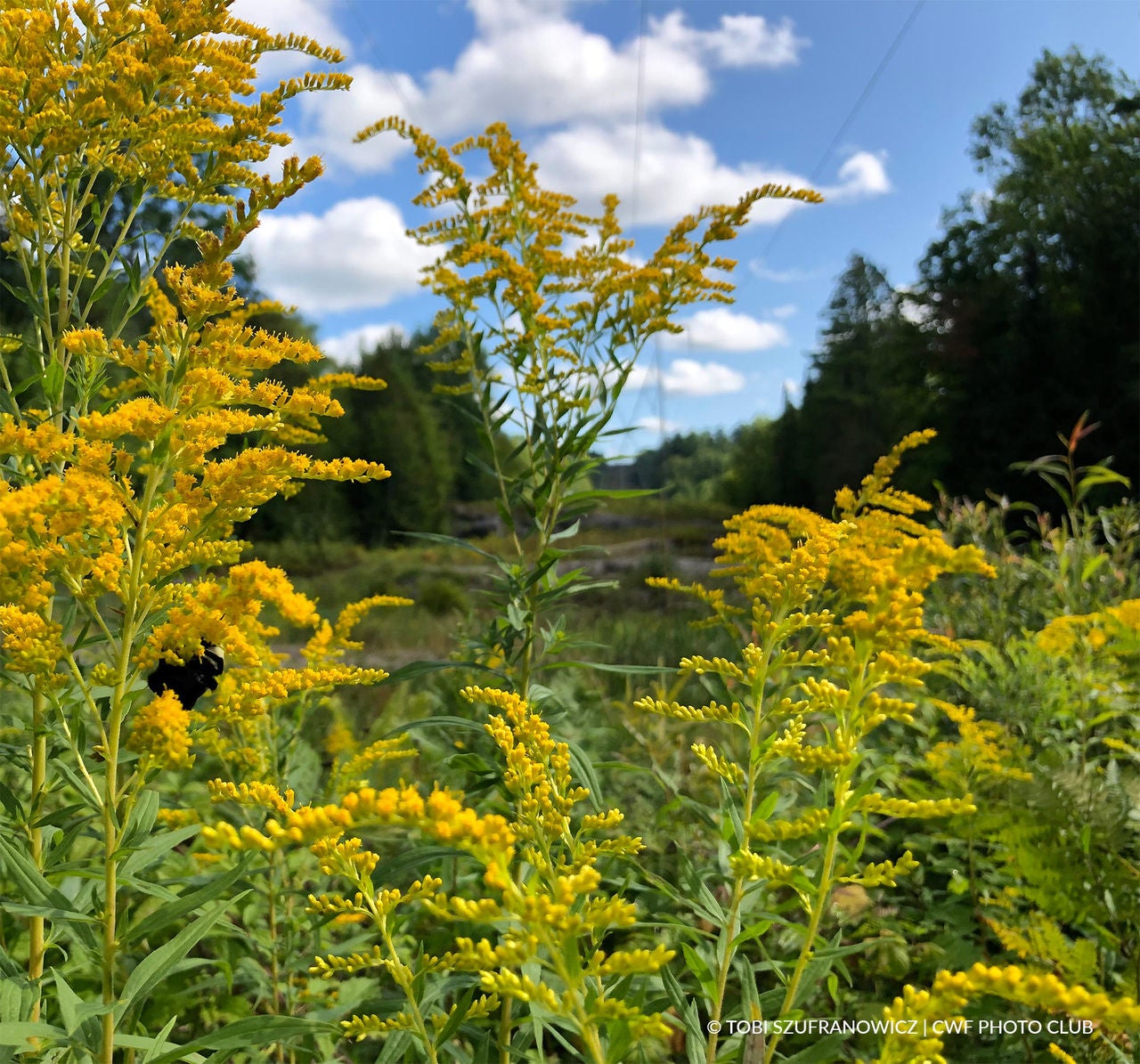
Rights-of-Way as Habitat Networks
(Canadian Working Group & Communities of Practice)
This project creates nectaring and breeding habitat for Monarch Butterflies — an umbrella species for our native pollinators. CWF partners with rights-of-way managers along the Eastern Monarch migratory path to both actively and passively restore native wildflower meadows.
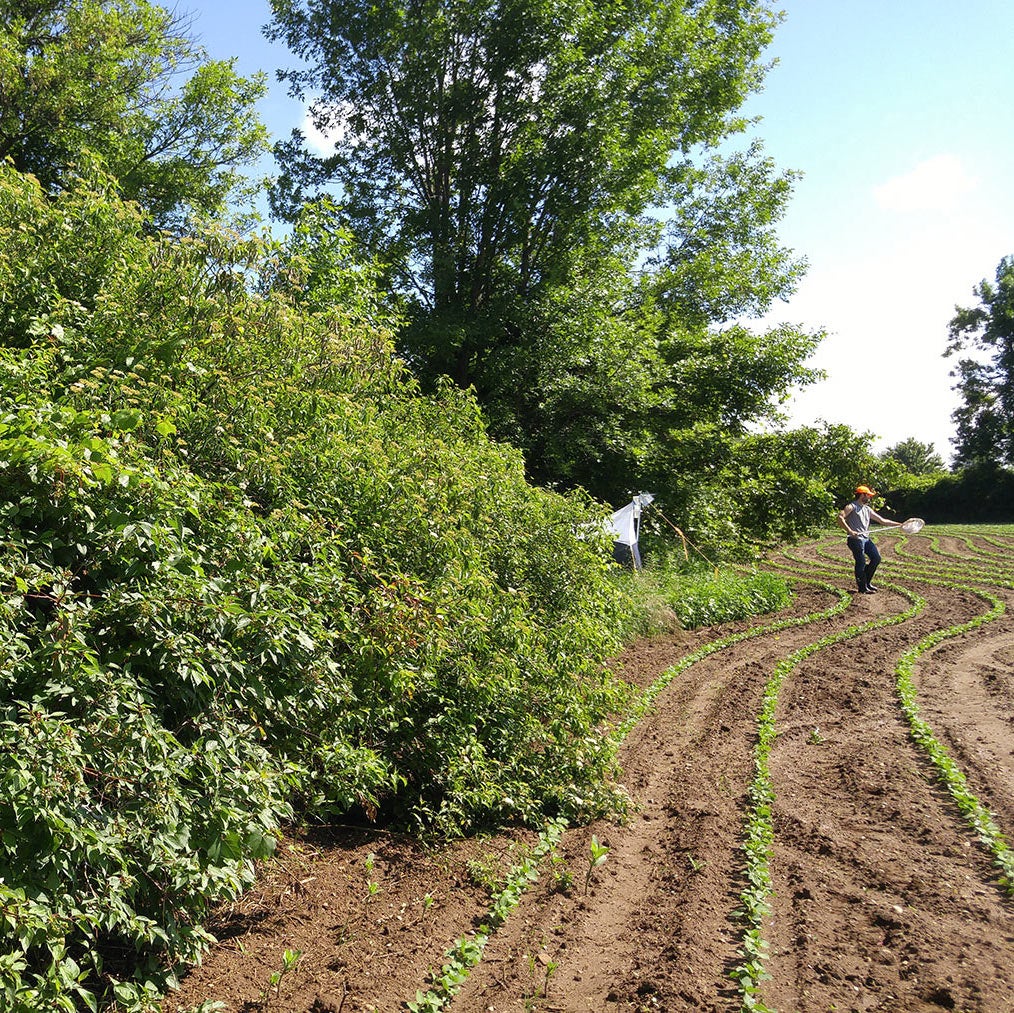
Native Pollinator Habitat on Farmland
Agricultural landscapes are a mosaic of farmed land and patches of natural habitats - woodlands, meadows, and stream corridors. This research project will help us learn which habitats support the greatest diversity and abundance of wild pollinators. Diversifying wild pollinators on agricultural land is imperative to improve seed quality, encourage cross-pollination, and to reduce our reliance on honey bees for food production. From this work, agricultural policy and programs can be designed to maximize the retention of valuable habitat remnants.
Prairie Grassland Multispecies Project
This research studies pollinators and grassland birds (and their insect food), in relation to how cattle graze on native grassland. It will help us understand the important role that ranchers play in maintaining biodiversity on native grasslands. For this project, CWF has partnered with the Saskatchewan Stockgrowers Foundation, (SODCAP) South of the Divide Conservation Action Program, the Royal Saskatchewan Museum, Agriculture and Agri-Food Canada, Carleton University, and ranchers of southern Saskatchewan.
Native Pollinator Habitat Restoration
This project creates meadow habitat for Monarch Butterflies - an umbrella species for our native pollinators. CWF sources local native seed, and then partners with other organizations to actively restore wildflower meadows. Lands close to the Great Lake shores are the specific focus for this project, because they are known migration routes for Monarchs.
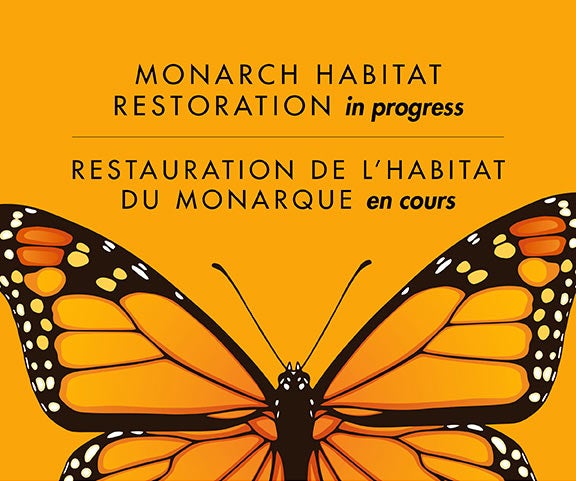
Canadian Seed Strategy Framework
A National Seed Strategy is critically necessary to support a sustainable supply of high-quality native plants (ethical, local, diverse, certified, climate-adaptive) across Canada. As Canadians are progressively interested in nature-based climate solution habit projects, there will be increased demand for native seed and seedlings to do restoration.
Interesting Facts

Native Bees
There are over 800 species of native bees in Canada. Most of them are solitary bees, digging burrows and laying their eggs with a food supply of nectar and pollen for the larvae.
Native Flies
Flies carry out about one-third of pollination services, making them very important to our food and ecosystems. The family Syrphidae (flower flies, hover flies) has over 800 species in continental Canada and USA.

Our Food
Insects pollinate most of our fruits and vegetables, tree nuts, forage for dairy cows, and coffee. They also improve the yield of soybeans. The economic value of pollination services to agriculture each year is greater than $265 billion CAD.
Papers & Handouts
Next Steps
Source Pesticide-
Free Plants
Purchase nursery plants for your garden from reputable retailers that can guarantee no neonicotinoid pesticides were used in the production of the plants.
Find Store >
Ban With A Plan
Be part of the five-step plan to help stop the decline of our pollinators due to neonicotinoid pesticides.
Sign the Petition >
#DoMoreForWildlife
You can help our pollinators when you make a promise to #DoMoreForWildlife.
Take Action >
Grow It! Don't Mow It!
Working landscapes in the U.S. and UK are being converted to wildflower meadows, helping pollinator populations recover. Canada can do the same. Lawns in our urban parklands and private backyards also offer an opportunity to give space back to the plant and animal populations that came before us. As land stewards, we can choose to invite life back into our neighbourhoods and rights-of-way corridors. .
Learn more >
Monarchs Navigating Climate Change
As our climate changes, Monarch Butterflies may need to adjust their current range to find suitable habitat for reproduction and feeding on nectar, and this may include making more use of habitat in Canada. As climate change is resulting in more frequent extreme weather events, Monarch mortalities during migration and on overwintering grounds may increase, and thus additional habitat will need to be restored to buffer against population declines. Large scale and connected habitat on rights-of-way corridors in Manitoba, Ontario and Quebec will help reduce stress on the Monarch as our climate gets warmer.
In addition, native wildflower meadows improve ecological services. As we continue to restore and maintain native meadow habitat on rights-of-way, we improve pollination services, reduce the impact of flooding, reduce heat on land, create natural snow fencing and increase carbon sequestration.
